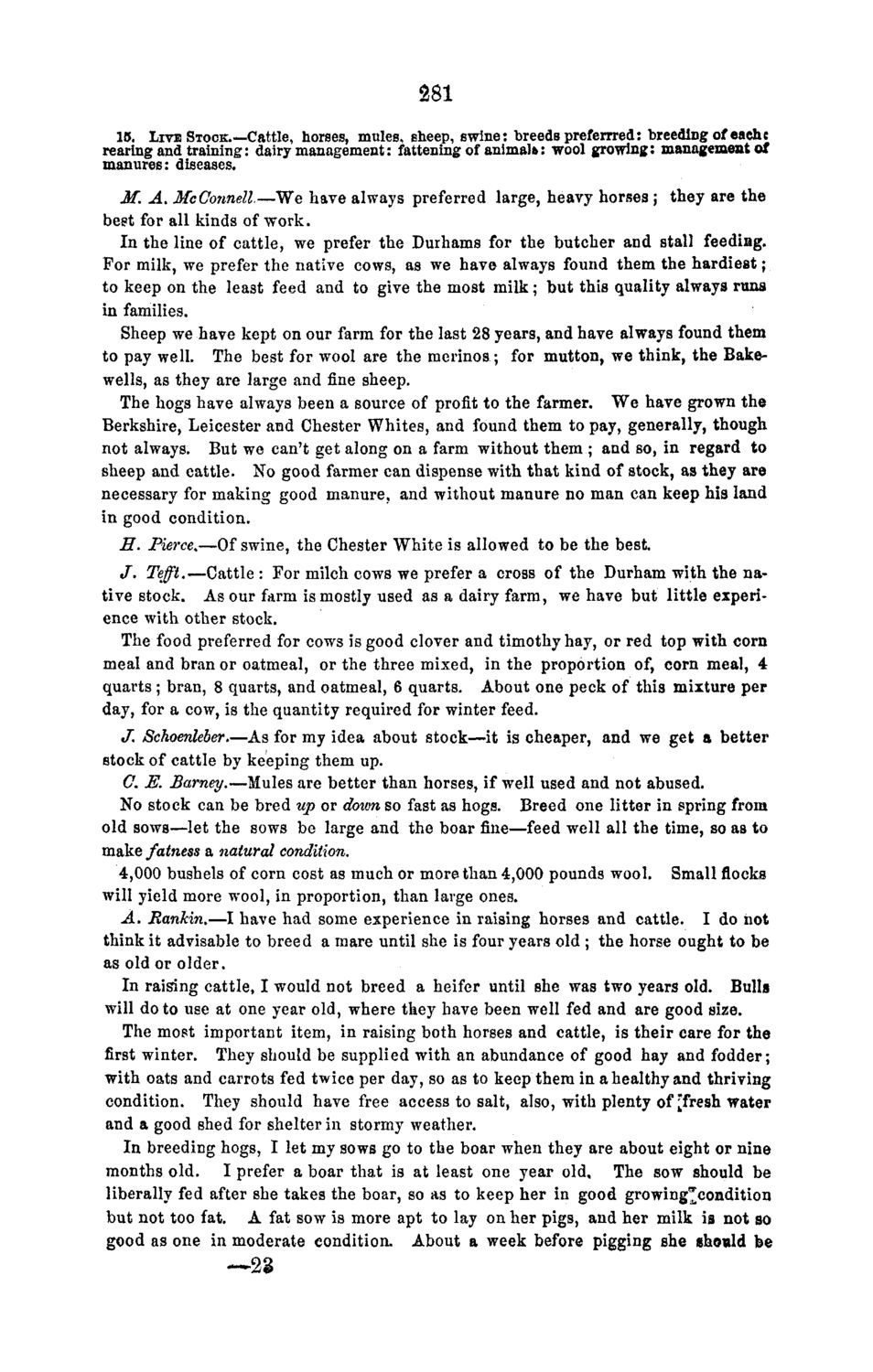| |
| |
Caption: Board of Trustees Minutes - 1868
This is a reduced-resolution page image for fast online browsing.

EXTRACTED TEXT FROM PAGE:
281 15. LIVE STOCK.—Cattle, horses, mules, sheep, swine: breeds preferrred: breeding of each: rearing and training: dairy management: fattening of animal*: wool growing: management ox manures: diseases. M, A. McOonnell—We hare always preferred large, heavy horses j they are the beet for all kinds of work. In the line of cattle, we prefer the Durhams for the butcher and stall feeding. For milk, we prefer the native cows, as we have always found them the hardiest; to keep on the least feed and to give the most milk; but this quality always runs in families. Sheep we have kept on our farm for the last 28 years, and have always found them to pay well. The best for wool are the merinos; for mutton, we think, the Bakewells, as they are large and fine sheep. The hogs have always been a source of profit to the farmer. We have grown the Berkshire, Leicester and Chester Whites, and found them to pay, generally, though not always. But we can't get along on a farm without them ; and so, in regard to sheep and cattle. No good farmer can dispense with that kind of stock, as they are necessary for making good manure, and without manure no man can keep his land in good condition. E. Pierce.—Of swine, the Chester White is allowed to be the best. J. Tefft.—Cattle : For milch cows we prefer a cross of the Durham with the native stock. As our farm is mostly used as a dairy farm, we have but little experience with other stock. The food preferred for cows is good clover and timothy hay, or red top with corn meal and bran or oatmeal, or the three mixed, in the proportion of, corn meal, 4 quarts ; bran, 8 quarts, and oatmeal, 6 quarts. About one peck of this mixture per day, for a cow, is the quantity required for winter feed. J. Schoenleber—As for my idea about stock—it is cheaper, and we get a better stock of cattle by keeping them up. G. JS. Barney.—Mules are better than horses, if well used and not abused. No stock can be bred up or down so fast as hogs. Breed one litter in spring from old sows—let the sows be large and the boar fihe—feed well all the time, so as to make fatness a natural condition, 4,000 bushels of corn cost as much or more than 4,000 pounds wool. Small flocks will yield more wool, in proportion, than large ones. A. Rankin.—I have had some experience in raising horses and cattle. I do not think it advisable to breed a mare until she is four years old ; the horse ought to be as old or older. In raising cattle, I would not breed a heifer until she was two years old. Bulls will do to use at one year old, where they have been well fed and are good size. The most important item, in raising both horses and cattle, is their care for the first winter. They should be supplied with an abundance of good hay and fodder; with oats and carrots fed twice per day, so as to keep them in a healthy and thriving condition. They should have free access to salt, also, with plenty of [fresh water and a good shed for shelter in stormy weather. In breeding hogs, I let my sows go to the boar when they are about eight or nine months old. I prefer a boar that is at least one year old. The sow should be liberally fed after she takes the boar, so as to keep her in good growing^condition but not too fat. A fat sow is more apt to lay on her pigs, and her milk is not so good as one in moderate condition. About a week before pigging she should be —28
| |